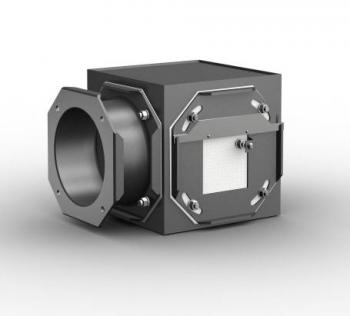CHIMNEY DRAUGHT REGULATOR
CHIMNEY DRAUGHT REGULATOR
« Back
The chimney draught regulator is a flanged structure that is supplied with the seats for the swinging edge of the regulator´s flap and the holder for the magnetic toroid. The original principle of the fine control of the permanent magnet draught on the regulator flap is the subject of the company´s VERNER patent. By the srew the adjusting magnet distance from the regulator´s flap provides to set the necessary magnetic preload that definies the underpressure threshold. If the higher underpressure (higher than the magnetic preload of the magnet) occures on the flap, the flap is half-closed so that the volume of the suction air assured the required underpressure in the chimney vent hole. The steady draught behind the boiler is provided by that and the optimal burning conditions in the heating device are set up (the chimney draught does not influence the boiler combustion). The results is the fuel annual savings of the 3 – 9%.
The installation of the chimney draught regulator brings a lot of other advantages and improvements:
It solves the problems not only with the irregularity of the chimney draught and subsequent furnace setting up, however even with the moistening of the chimney´s constructions
It adapts the properties of the original chimney to the new heating device operation so that the original chimney (usually too big and poorly heat-insulated) can work on without any expensive renovations.
It provides the exhaust-gas dilution, increase of their capacity and of the circulation speed in the ventilation pipe due to the air suction from the boiler at the excessive chimney draught. The result is the minor cooling and increase of the water condensation resistance. The combustion gas temperature drop off due to the aerifying is compensated by the dew point´s reduce of the incurred mixture.
It sucks in the air by the draught regulator during the operation breaks of the furnace when the heated chimney makes the sufficient draught. The air is preheated in the bottom part of the ventilation pipe and it dries up and ventilates in the higher parts. In that way the good chimney condition is provided independently on the way of the furnace operation even in the cases of getting the chimney wet and subsequent damages.
